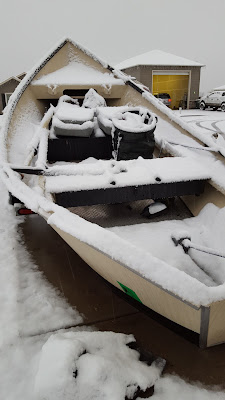The last couple of weeks have been busy to say the least. Our spey presentation at Trail Outdoor Fellowship was a great success, I have introduced (hooked) 10, yes 10 new people to spey fishing, and had the chance to co-panel an important session at the TU regional conference. Here are some of the lessons I have learned from the week.
First, my life has the personal, molded touch, of a personal Creator and that was by no accident! I was created to bring the Creator Redeemer Glory by swinging flies, and all the results of doing so brings.
Second, we have to care-for, and use the natural resources. Let me explain: I used a valuable resource, the Rogue River to bring joy to many people. The more people who catch the spey bug will learn to protect the River, Access and Lifestyle that the sport promotes. I was especially happy that out of the 10 people who were introduced to the spey 2 of those were kids. I hope as they grow into fishermen that they will learn how to protect the resource that fosters the sport. We will always need trees, lumber, water, fish, crops, and such, but if people learn more about the world they have been entrusted with, I think they will learn how to use these resources with a conscious. Especially the kids..the more tugs they experience, the more they will weigh their decisions when they grow up... to think that I was a part of this makes me feel small.
Third, I realized that most of these lessons take place on public land, and we need to protect it for access, as resource, and as a environment. What do I mean by this? First, to pay the bills the State is trying to grab federal lands that lie within their boarders. This is prevalent through the west! on the surface this doesn't look like a bad Idea, but it creates a problem for sportsman and anyone else who enjoys using the land that Americans own. The western states have attached a ton of their programs to the payments that they received from the timber sales withing their borders. Now those sales have been reduced to a trickle, there is very little money to fund them anymore. The biggest bill that gets hit the hardest is the school funds. Now that these funds are drying up the states are desperate, and one of the short term fixes is to obtain federal land so they can sell it. If they have the land they can control it. If they can control it they can sell it and meet some of the budget gaps. The problem here is that if the state sells, it would be sold to companies that have proven time and time again to close it for access. I can understand why companies limit general access as they are held responsible for anything that is done on that land. How would you like to have to pay for the environmental impact report for a bunch of trash some low life dumps on your land. Worse yet, how would you like to have to pick up the bill for some careless person who starts a forest fire on the edge of one of your roads.
The root of the problem is that the pacific northwest has put all of our eggs in the timber basket and that basket has dried up. Our rural towns are dying because of this. We have to come to this realization if the rural northwest is to survive. We have to expand the basket. I'm not saying the timber shouldn't be part of that basket, but what I am saying is that it cant be all of it. Timber is a renewable resource (when done right) and is measured as such, but fish are to, yet they are never taken into account as a asset. As a matter of fact a Klamath Redband Trout that is released by a client is as much a renewable resource as a tree. That trout has generated revenue, just like a tree does when it becomes timber. We need to start looking at management through these eyes if we are going to survive in the rural west. Bend Oregon is an example where a rural community stepped outside of the shadow of timber and flourished. It did it by the proper use of the public lands that surround it.
We need to think about the holistic approach to the use public grounds. All the stake holders need to realize what they have in common, and how they can help each-other use the public resources in an intelligent way. Sure ranchers rely on the grazing rights to sustain their lively hood. Sure we need wood(last time I looked no one lived in a house that didn't have wood in it somehow), but the Guide needs fish, and the ecotourist need birds to check out....the only way this can happen is if the land that is in federal control, stays in federal control. That is what I have learned.
 |
You never forget your first fish! Especially on the Spey Rod!
This has Value!
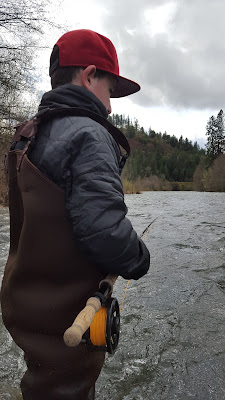 |
A new one in the ranks!
Better than any xbox!
|
|
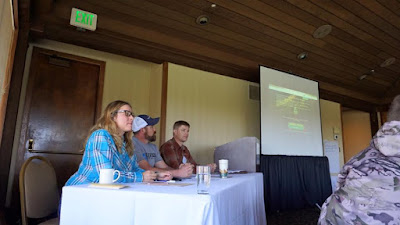 |
The Public Land Panel for the Trout Unlimited Regional Conference
Mia Shepard, Nate Bailey, and Corey Fisher |
 |
Mia Answering one of a bunch of questions.
|
 |
This Has Value
|
 |
| And this has value. |

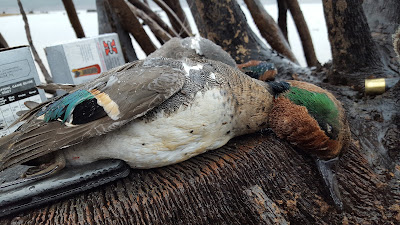



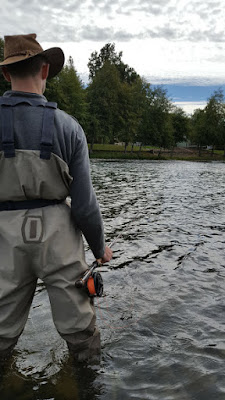



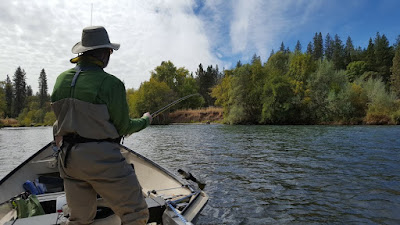







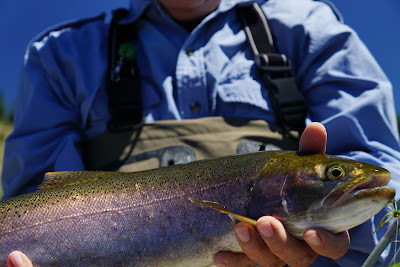
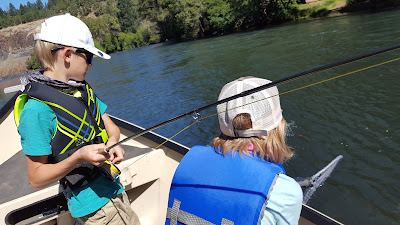
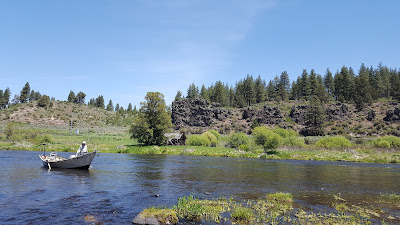


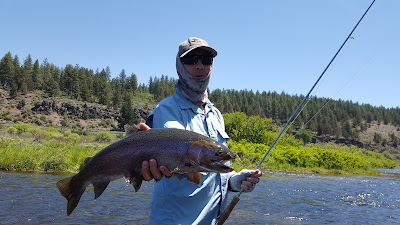

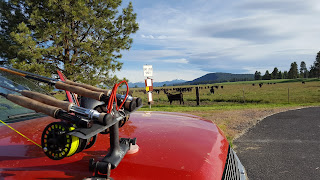
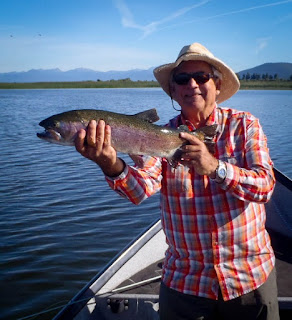

 Ask if the guide has a website? Not all good
guides do, but you can tell a ton about a guide just by what he puts on his
sight. If you don’t see any offering for Fly Fishing Instruction, and you’re a beginner,
you might think twice. Look for kids with fish, that’s a good indicator that
the guides are familiar with teaching the sport at the hardest level. Look for
references, happy clients like to help out the guides that help them have the
best trip possible.
Ask if the guide has a website? Not all good
guides do, but you can tell a ton about a guide just by what he puts on his
sight. If you don’t see any offering for Fly Fishing Instruction, and you’re a beginner,
you might think twice. Look for kids with fish, that’s a good indicator that
the guides are familiar with teaching the sport at the hardest level. Look for
references, happy clients like to help out the guides that help them have the
best trip possible. 








